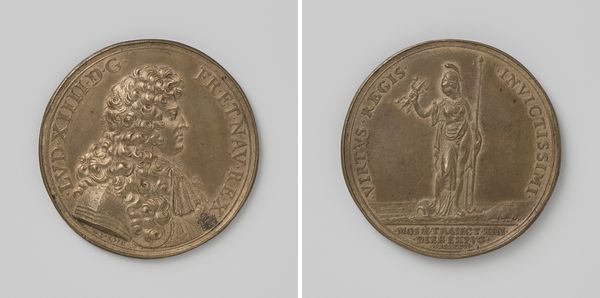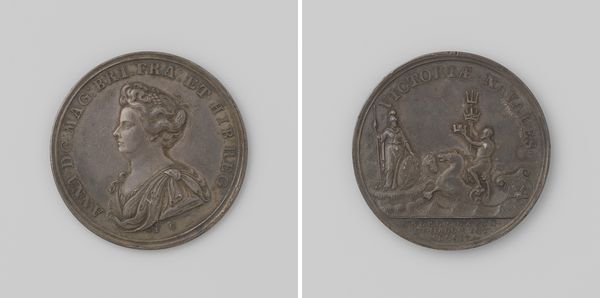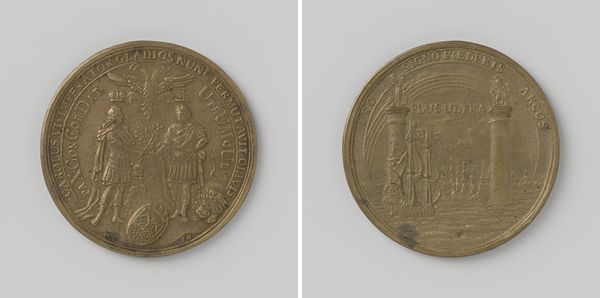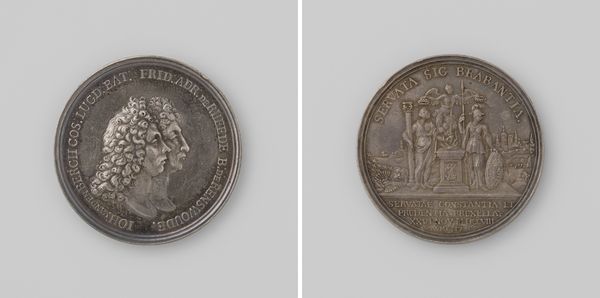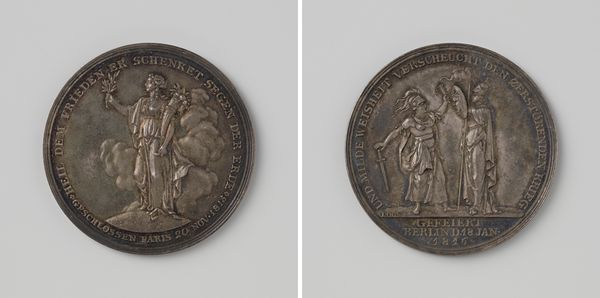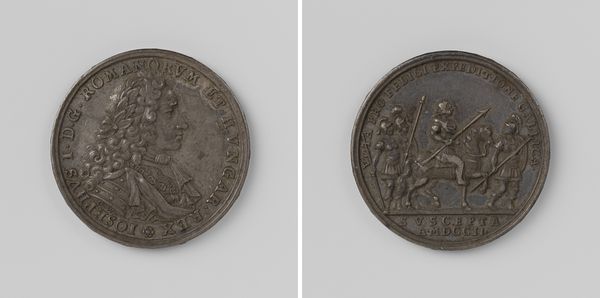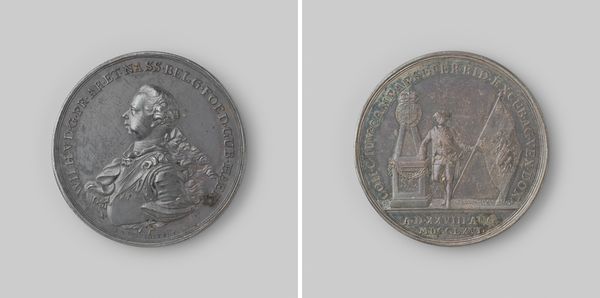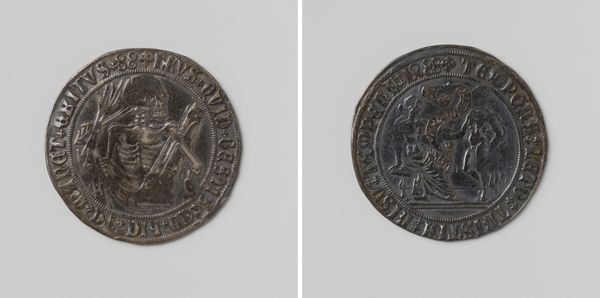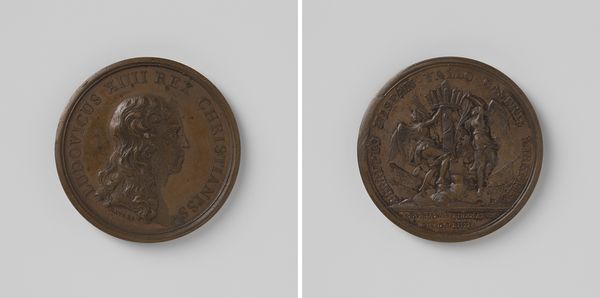
metal, relief, sculpture
#
portrait
#
medieval
#
metal
#
sculpture
#
relief
#
11_renaissance
#
sculpture
#
history-painting
Dimensions: diameter 2.9 cm, weight 11.47 gr
Copyright: Rijks Museum: Open Domain
This is a bronze Austrian medal by Hermann Wittig, dating from around 1883. Note the circular format, which immediately signifies wholeness, unity, and containment. The composition is divided into two distinct sides, each conveying a specific set of symbols and meanings. One side features the Virgin Mary with child enthroned, flanked by kneeling figures, suggesting themes of reverence and divine intercession. The other side shows the double-headed eagle, a potent symbol of the Austrian Empire, surrounded by text. The medal's form and structure highlight a complex interplay between religious and political iconography. The formal design is meant to engage with established notions of power, faith, and national identity, prompting viewers to consider the relationship between spiritual and secular authority. The use of bronze also conveys a sense of permanence, history, and tradition. Consider how this tactile quality of the material enhances the medal's symbolic weight.
Comments
No comments
Be the first to comment and join the conversation on the ultimate creative platform.
